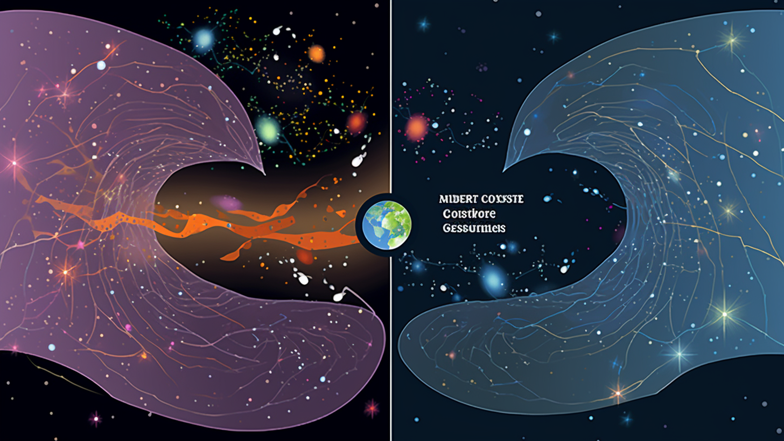
Galaxy clusters are the largest objects in the universe bound together by gravity. They consist of hundreds to thousands of galaxies, which are held together by a cloud of hot gas that permeates the space between them. The hot gas within clusters emits X-rays that allow us to study them in detail, but it is not the only component of these clusters. There is also dark matter, a substance that does not interact with light, and hence is invisible to telescopes. Nevertheless, we know dark matter exists from the gravitational effects it has on visible matter. In fact, dark matter comprises most of the matter in the universe.
The nature and behavior of dark matter have long been a topic of research in astrophysics. While it does not emit or absorb light, astronomers can infer its existence from the gravitational pull it exerts on gravity-sensitive objects such as galaxies. The distribution of dark matter seems to be critical to the formation and structure of galaxy clusters. Without dark matter, galaxies could not form, and their motions in clusters would not fit with the observed behavior. This makes studying dark matter crucial in unraveling the mysteries of galaxy clusters.
One of the most exciting recent discoveries in the field of galaxy clusters is the detection of unusually large and bright structures called radio halos. These halos are regions of diffuse radio emission that surround the cluster's center and are generated by high-energy electrons spiraling around intergalactic magnetic fields. Their origin is still being debated, but it is believed that collisions between clusters or powerful shock waves in the hot gas could generate them. These halos are significant indicators of the cluster's dynamics and history and help us constrain the amount and distribution of dark matter.
Another critical aspect of studying galaxy clusters is their evolution. We know that galaxy clusters are not static but change over time. They grow through mergers with other clusters, collisions with gas-rich galaxies, and the accretion of hot gas from their surroundings. The rate of these interactions depends on both the properties of individual clusters and the global structure of the universe, making them a powerful probe of its evolution.
The analysis of the properties of cluster mergers can provide important clues to understand the nature of dark matter. In particular, the velocity of the merger shock wave, the ratio of hot gas to dark matter in the clusters, and the behavior of individual galaxies during the merger, all depend on the properties of dark matter. Studying these parameters is an essential part of solving the dark matter puzzle.
Simulations play a critical role in studying galaxy clusters and dark matter. With the help of computer models, astrophysicists can create virtual clusters, simulate their evolution, and study their properties. The simulations enable us to make predictions that we can compare with observations, identify features that help us understand the dynamics of galaxy clusters, and test theories to solve the dark matter puzzle.
Recently, researchers used a state-of-the-art cosmological simulation called IllustrisTNG to study the formation of galaxy clusters. The simulation confirmed that clusters grow over time due to mergers with other clusters and gas accretion. However, it also found that the distribution of dark matter is not as homogeneous as previously thought, with smaller structures within the galaxy clusters forming earlier than larger ones. This finding highlights the complexity of galaxy cluster formation and the importance of simulations to unravel their mysteries.
In conclusion, galaxy clusters and dark matter are two of the most fascinating and challenging topics in astrophysics. The study of these clusters has revealed many mysteries that are critical to our understanding of the universe's evolution. The recent discovery of radio halos, the study of galaxy cluster mergers, and simulations have provided new insights into the nature of these clusters, their evolution, and the mystery of dark matter. The study of galaxy clusters will continue to be an active field of research that will undoubtedly reveal many more surprises about our cosmos.
Comments
Post a Comment